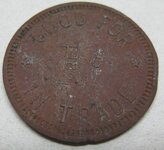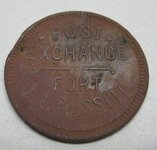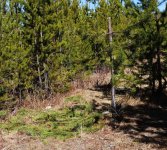MI Joe
Newbie
I found this token at a site dating to around 1880. This is a 1cent token from Fort DA Russell, which I believe is an American Military Installation in Wyoming established in 1887. In 1930, the "Fort Russell" name switched over to a different Installation in Marfa Texas. I can not seem to find much on 1 cent trade tokens and am hoping it is pre-1900. As most tokens seem to have face values of 5, 10, 25 or even 50 cents.
If it does date to the original Fort Russell that would be great. It was the home to three Black regiments; the 9th and 10th Cavalry and the 24th Infantry (the famous Buffalo Soldiers) for much of the late 19th century
Does anyone have the Standard Catalog of US Tokens? I wondered if that lists Military Trade Tokens. Any help would be appreciated.
If it does date to the original Fort Russell that would be great. It was the home to three Black regiments; the 9th and 10th Cavalry and the 24th Infantry (the famous Buffalo Soldiers) for much of the late 19th century
Does anyone have the Standard Catalog of US Tokens? I wondered if that lists Military Trade Tokens. Any help would be appreciated.











